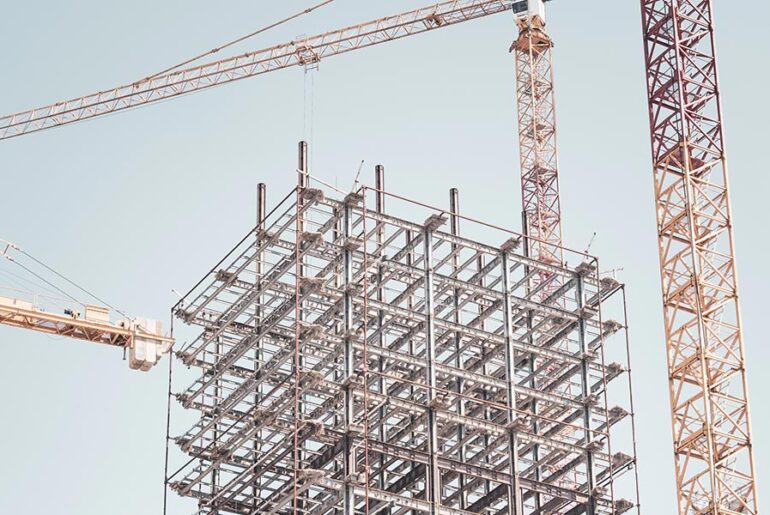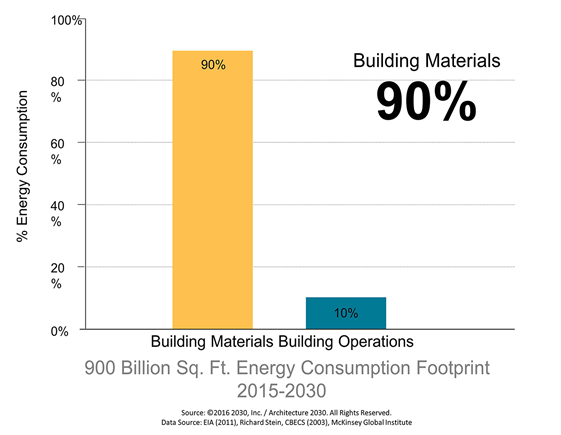In a data-driven world, you need to know what to measure. If there’s one metric to measure climate impacts, it’s carbon. As Katie Ross, Global Real Estate and Facilities Sustainability Lead at Microsoft, said at the Global Climate Action Summit in San Francisco last month, “carbon is the great equalizer.” If the real estate industry is to truly address climate change, it needs a complete shift toward quantifying impacts in terms of carbon emissions.
Luckily for us, we’re already mid-shift. Between Architecture 2030’s carbon neutral 2030 Challenge, the first ever third-party Zero Carbon Certification introduced by the ILFI this spring, the WorldGBC’s Net Zero Carbon Buildings Commitment launch last month, and the newly released report on Global Warming of 1.5°C from the UN IPCC, the focus on Net Zero Carbon has never been stronger.
However, while the goal of operating buildings with zero emissions is picking up speed across the globe, the discussion around another facet of emissions with a much larger opportunity for immediate impact remains muted: when we talk about Net Zero Carbon, we need to talk about embodied carbon.
“WHEN” MATTERS: THE TIME VALUE OF CARBON
As it turns out, embodied carbon – which accounts for emissions associated with the production, transportation, and installation of building materials – will play a drastically larger role than operational emissions in determining whether we achieve our aggressive carbon neutrality goals. To propagate this critical mental shift across the building industry, we need to consider the time value of carbon in building materials: the earlier carbon is emitted, the worse its impact is due to its more immediate contribution to global warming. Carbon used in the production of materials or construction of buildings is emitted earlier than carbon in operations, and thus has a larger, more immediate impact on climate.
This means that over the next 20 years, the embodied emissions from new buildings (300 million metric tons annually from the 5.7 billion square feet of new construction built in the U.S. every year) will outweigh the operating emissions from those buildings – by a whopping 90 percent. Additionally, as we continue to clean up our electricity grid, future building operations will become less carbon intensive, diminishing the impact of operational carbon reduction when compared to embodied carbon reduction. So, if we want to reach these aggressive targets, we need to expand our net zero focus to not just incorporate, but emphasize, embodied carbon.
ENERGY CONSUMPTION FOOTPRINT OF NEW CONSTRUCTION 2015-2030
EMBODIED CARBON REDUCTION: 5 ACTIONABLE STRATEGIES
There are countless ways to reduce embodied carbon, but some are far more powerful than others. Use the following prioritized recommendations from Stok’s sustainability consultants to significantly reduce the embodied carbon in your project’s building materials with a strategic approach:
1. Reuse and repurpose structure.
Concrete and steel structures are responsible for the highest percent of emissions on new construction projects. Therefore prioritizing the redevelopment of existing buildings over new construction provides the most significant embodied carbon reduction.
2. Maximize recycled content.
For the greatest ease-to-impact ratio, ensure that all your materials maximize recycled content. Structural materials will have the largest footprint by volume, so prioritize recycled content there first. Maximizing the proportion of fly ash – a by-product of the coal industry – in concrete is a simple yet impactful solution.
3. Use fewer materials.
Maximizing recycled content in your materials is critical, but having fewer to begin with is a more proactive approach. Design for structural efficiency to avoid excess from the project foundation and expand the “just use less” mentality to finish materials for full impact. Incorporating exposed ceilings and open floor plans into the design will especially help minimize materials on your project.
4. Swap in low carbon materials.
A number of publicly available databases report on carbon impacts of building materials. Check out Circular Ecology, ecoinvent, and GaBi’s robust lifecycle databases to help select low carbon alternatives – some, like Cross-Laminated Timber (CLT), are even considered to have negative embodied carbon!
5. Forget about transportation.
Contrary to popular belief, transportation only accounts for approximately 10 percent of embodied carbon in building materials. Despite wanting to avoid shipping materials in from around the globe, shipping impacts are largely dwarfed by the embodied carbon reduction from focusing on materials that are manufactured in low carbon grids, regardless of location.
Any of these strategies will help drastically lower your project’s embodied carbon, which is critical to achieve aggressive global carbon neutrality targets. However, the most comprehensive approach to Net Zero Carbon involves a full Life Cycle Assessment (LCA) to determine how to best address your specific project’s needs. To learn more about Net Zero Carbon or discuss an LCA for your project, contact our team.




